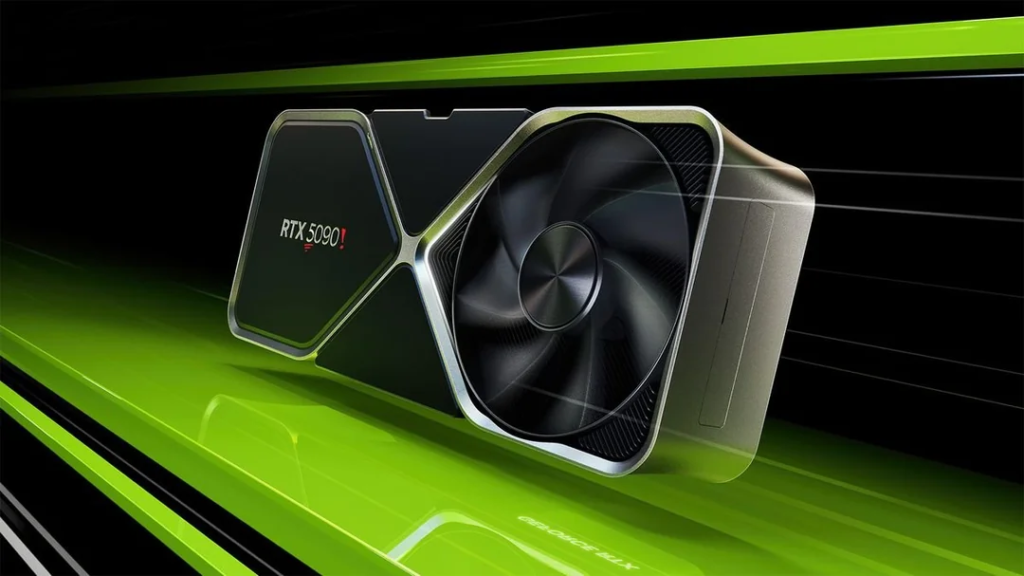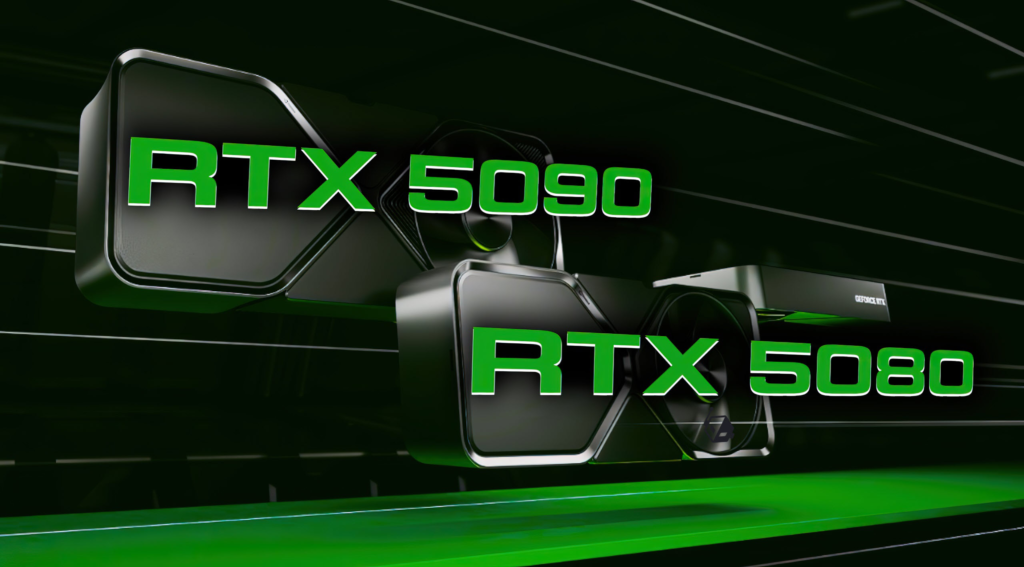At CES 2025, NVIDIA is planning a major unveiling of its forthcoming GeForce RTX 5090 and RTX 5080 graphics cards, which will be part of the Blackwell GPU family. These leading gaming GPUs will showcase remarkable progress in power delivery, PCB design, and connectivity that will take the gaming experience to levels never seen before. From several industry sources, such as Benchlife and The Verge’s Tom Warren, we learn that NVIDIA has finished its designs and is readying for an early 2025 launch.
CES 2025: Official Launch Platform
Anticipated for January 2025, the official rollout of the NVIDIA GeForce RTX 5090 and RTX 5080 will happen at the Consumer Electronics Show (CES). According to multiple reports, including those from Wccftech, the laptop versions of the RTX 50 series will be in the spotlight along with the new cards. This timing corresponds with NVIDIA’s usual release pattern, evident in the previous RTX 40 series. In addition, there’s talk of a China-centric edition of the RTX 5090 called the RTX 5090D that should follow the global launch shortly.
PCIe 5.0 and DP 2.1a: A Leap in Bandwidth
What’s most intriguing about the RTX 50-series is its support for PCIe 5.0, which doubles bandwidth and transfer speeds as opposed to the PCIe 4.0 standard. While current motherboards from Intel and AMD are already PCIe 5.0 compatible, the new NVIDIA GPUs will be the first gaming sector GPUs to utilize this technology.
In addition, the RTX 5090 and 5080 will support DisplayPort 2.1a (UHBR20), which allows them to manage up to 16K resolution at 60Hz alongside HDR and 10-bit color. The expansion to DisplayPort yields double the bandwidth compared to HDMI 2.1, enabling the use of very high refresh rates at reduced resolutions.

Innovative PCB Design and Cooling Solution
NVIDIA is going to implement a complex new PCB layout with its RTX 5090. The first model will apply a three-part PCB design, having each board carry different chip elements. Ths configuration will include 16 GDDR7 memory modules, all with 3 GB of VRAM that run at speeds between 28 and 32 Gbps. Featuring 32 GB total memory capacity via a 512-bit interface, the new consumer GPUs offer up to 2 TB/s of bandwidth—a new achievement in the industry.
Alongside the updated PCB will be a new cooling solution. The design for the Founders Edition of the RTX 5090 is forecast to use a space-efficient dual-slot cooler, though it remains undecided if the RTX 5080 will utilize this design. Premature information points to this cooler being dramatically different than the RTX 30 and RTX 40 series, enhancing the total aesthetic and thermal efficiency.

Single 12V-2×6 Power Connector
According to power specifications, the RTX 5090 will work with a single 12V-2×6 connector, correcting previous claims that it could need dual connectors. Devoted models, intended for extreme overclocking, will typically come with double connectors, although this is not the standard design. Created to operate at 600W and 400W, respectively, the RTX 5090 and RTX 5080 are expected to draw less power than their prior versions in regular gaming cases. In spite of their high thermal design power (TDP), actual power consumption can be lower than both the RTX 4090 and RTX 3090 Ti while under similar load conditions.
NVIDIA RTX 5090 & 5080 Specifications
| Feature | NVIDIA RTX 5090 | NVIDIA RTX 5080 |
| GPU Name | Blackwell GB202-300 | Blackwell GB203-400 |
| SMs (Streaming Multiprocessors) | 170 (192 Full) | 84 (84 Full) |
| GPU Cores | 21,760 (+33%) | 10,752 (+11%) |
| Memory Capacity | 32 GB GDDR7 | 16 GB GDDR7 |
| Memory Bus | 512-bit (+33%) | 256-bit (0%) |
| Memory Speed | 28-32 Gbps | 28-32 Gbps |
| Bandwidth | 1,792-2,048 GB/s | 896-1,024 GB/s |
| Total Board Power (TBP) | 600W (+33%) | 400W (+25%) |
| Power Connector | Single 12V-2×6 (16-pin) | Single 12V-2×6 (16-pin) |
First GPUs with PCIe 5.0 & DisplayPort 2.1a
The unveiling of the RTX 50-series at CES 2025 illustrates NVIDIA’s ongoing pledge to exceed the frontiers of gaming and graphical performance. With backing from PCIe 5.0 and DisplayPort 2.1a, gamers can look forward to accelerated data transfer and heightened display choices alongside the possibility of extreme resolutions and fast refresh rates. Creating a new generation of products aimed at both gamers and professionals handling AI workloads, video editing, and 3D rendering. The RTX 5090 and RTX 5080 find themselves at the cutting edge of gaming and computational performance thanks to these specifications.





